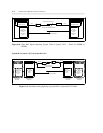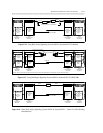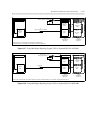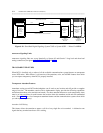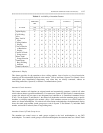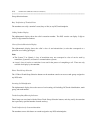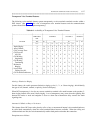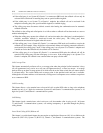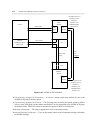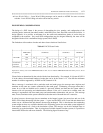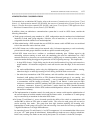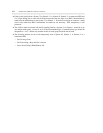6-18 DISTRIBUTED COMMUNICATIONS SYSTEM (DCS)
_ ___________________________________________________________________________________________________________________________
_ ___________________________________________________________________________________________________________________________
_ ___________________________________________________________________________________________________________________________
• If the called party is at a System 85, Generic 2, or DIMENSION PBX node, the callback call can only be
activated if the called node is returning busy tone or special audible ringback.
• If the called party is at a System 75 or Generic 1 endpoint, the callback call can be activated if the
endpoint is returning busy tone, special audible ringback, or audible ringing.
• The calling party must disconnect within 6 seconds after hearing the confirmation tone for automatic
callback activation.
The callback to the calling and called parties is as follows when a callback call has been made to a user at
another node/endpoint:
• When the calling party answers the callback call, and no tie trunk to the called party’s node/endpoint is
available, automatic callback is reactivated toward the called party. The calling party hears
confirmation tone instead of ringback when this occurs.
• If the calling party is on a System 85, Generic 2, or DIMENSION PBX node and is unable to receive the
callback call (for example, a busy single-line voice terminal without call waiting), automatic callback is
reactivated by the calling party’s node. If the calling party is on a System 75 or Generic 1 endpoint and
is unable to receive the callback call, the callback call is canceled.
• If the calling party is on a System 85, Generic 2, or DIMENSION PBX node, the callback call will be
canceled if the calling party calls the called party, or vice versa. If the calling party is on a System 75 or
Generic 1 endpoint, the callback is not canceled when one party calls the other.
Call Coverage Tone
This feature automatically redirects calls to a coverage point when the principal (called extension) is busy
(all call appearances busy), active on a call (one call appearance busy), or does not answer. A coverage
path can have up to three coverage points all of which must be on the same switch (the call cannot redirect
to a distant node). The switch checks each coverage point in the specified order until one is available.
Although the call cannot redirect to a distant node, coverage tone is transparent across switches except from
or to a DIMENSION PBX.
Call Forwarding
This feature allows a voice terminal user to forward all calls to other DCS nodes as long as the telephone
number has only 4 or 5 digits for DIMENSION, System 85, and Generic 2 communications systems, or 16
digits for System 75 and Generic 1 communications systems.
Call Waiting
This feature signals a terminal user, who is active on a call, that another caller is trying to call. In System
75 and Generic 1 communications systems, call waiting transparency is provided through the priority
calling feature.
Leave Word Calling (LWC) Without AP
This feature is a switch-based feature does not require an Applications Processor (AP). It is available on the
System 85 (R2V2-V4), System 75 (R1V2-V3), Generic 1, and Generic 2 communications systems. The



